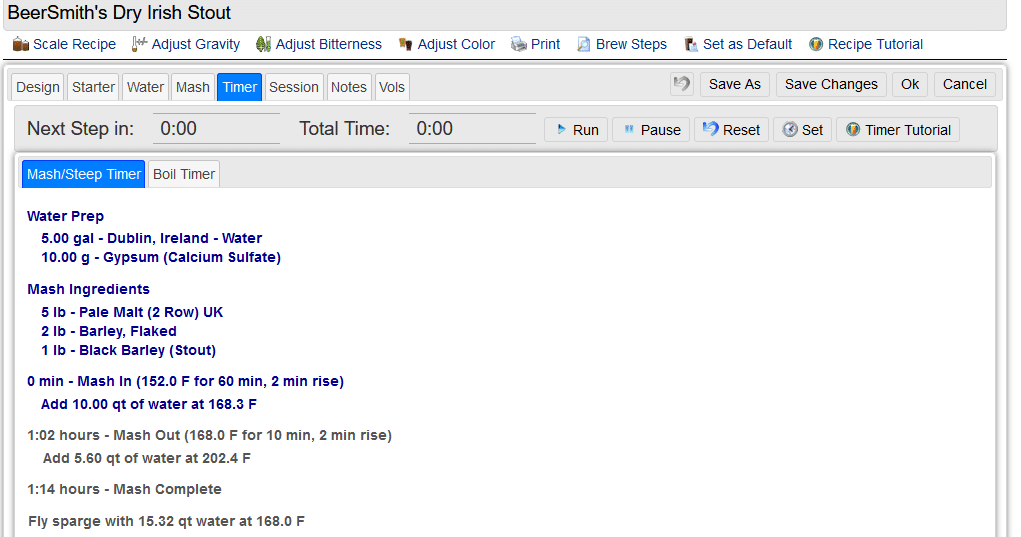

At this point i will leave mash sit for a my first rest period and let it begin to settle (there’s always more then several inches of liquid above the grain bed). stirring until i feel mash bed is evenly distributed. I begin by adding water through the bottom until about 2 inches above the false bottom, then slowly adding the malt (usually 20-25 lbs total malt bill) and remaining water through top (ususally around 11 gallons total). I just began using the sabco brew magic about a month ago and been having issues maintaing the temp and flow resulting in blocking up the system with malt almost everytime i use it.
Grainfather mash profile beersmith upgrade#
Brew Day, Immediate Thoughts… Magic Soft Upgrade.Brew-Magic Upgrade, the Recipe Function.

Grainfather mash profile beersmith software#
Sabco upgrades include the latest software for the PLC (I did not opt for the wireless feature) and the site glass on the circulation return plumbing. Some of the upgrades I have made include false bottom stands (from Jaybird), a whirlpool line for the BK, Loc-line for circulation and lauter. The kettles are “new” Sabco keggles, and the Mash Tun and Boil Kettle contain false bottoms.

The V350M is a hybrid RIMS system, featuring 3 kettles with direct fire, a RIMS tube and pump that allows for continuous recirculation. Below are articles and posts that may help you get up and running, address some key techniques, as well as a variety of upgrades. Note that there will be some fermenter losses so this final keg or bottle volume will differ.I brew on a Brew-Magic system. Batch Volume = final volume in the fermenter after chilling and transferring.Evaporation Rate = 3L/h for 230V, 2L/h for 120V (evaporation rate is lower for 120V GF models as it has 1600W heating element rather than 2000W).This will depend on the boil time and evaporation rate) Boil Off Volume = Evaporation Rate x (Boil Min/60) (water volume lost to evaporation during the boil.Will change depending on the amount of kettle hops and determination of brewer to maximise fermenter volume.) Includes both chiller losses and trub loss in the boiler. Post Boil Losses = 2L (rough estimate.Grain Absorption Ratio = 0.8 (ratio to determine the amount of water that is absorbed in grain which will be removed after sparging).Grain Weight = total grain weight of all the grains included in the mash – exclude late sugar additions weight.Mash Tun Deadspace = 3.5L (dead space between the base and bottom of grain basket).Optimum value for mashing in G30 from testing) Water To Grain Ratio = 2.7 (litres of water per kilogram of grain.What those terms mean (example G30 Brewing unit): Pre Boil Volume = Batch Volume + Post Boil Losses + Boil Off Volume.Sparge Volume = Preboil Volume – Mash Volume + (Grain Weight x Grain Absorption Ratio).Mash Volume = (Water To Grain Ratio x GrainWeight) + Mash Tun Deadspace.The Calculations used in the Recipe Creator on the app are as follows:


 0 kommentar(er)
0 kommentar(er)
